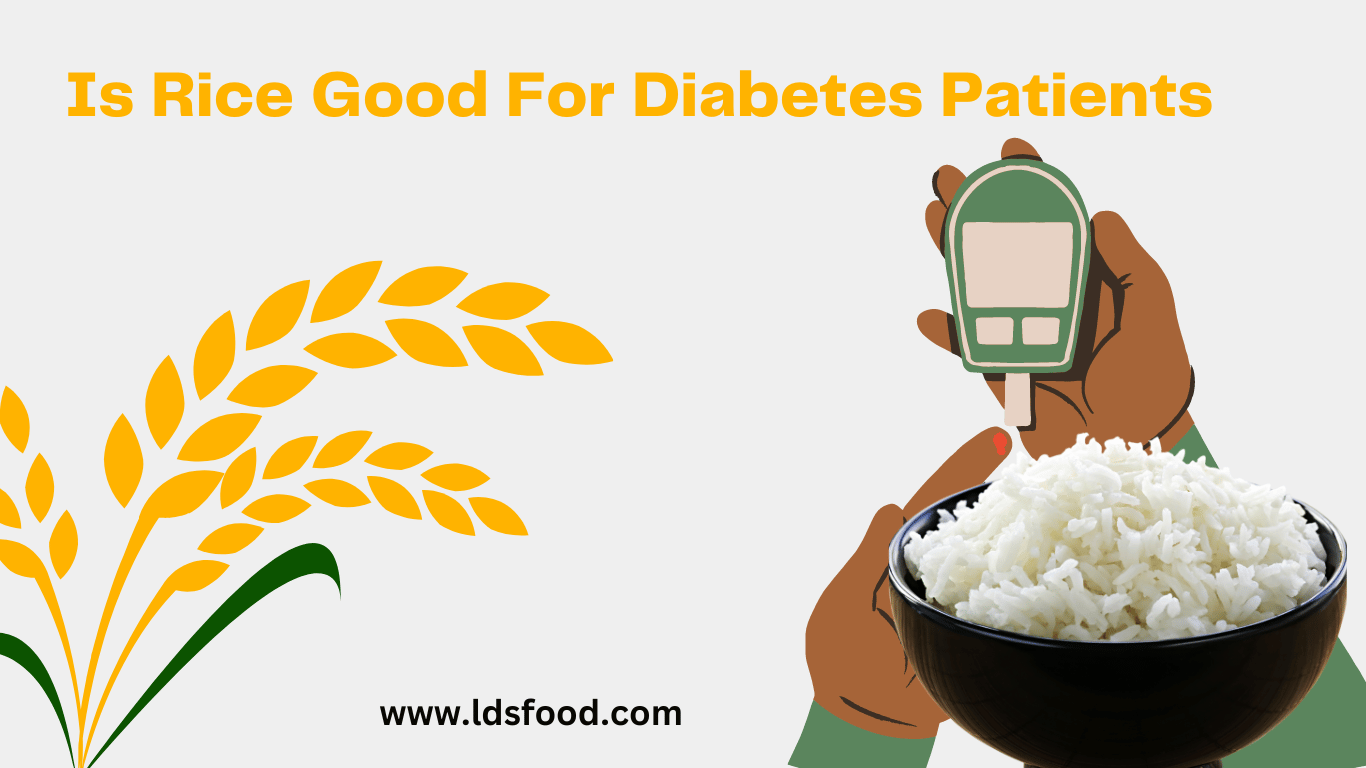Introduction
Rice is a staple food for many people around the world, but for those with diabetes, managing rice consumption can be a bit tricky. Diabetes is a chronic condition characterized by high blood sugar levels, and it is important for those with the disease to maintain a healthy and balanced diet. In this article, we will explore how rice fits into a diabetes-friendly diet and provide tips for managing rice consumption for people with diabetes.
Rice And Its Impact On Diabetes Patients
First, let’s talk about the different types of rice and their impact on blood sugar levels. White rice, which is commonly consumed, has a high glycemic index (GI) value. This means that it can cause a rapid increase in blood sugar levels, which can be problematic for people with diabetes. On the other hand, brown rice has a lower GI value and is a better option for people with diabetes. It is also rich in fiber, vitamins, and minerals which can help to regulate blood sugar levels.
It’s also worth noting that there are also other types of rice that have been specifically cultivated to have a lower glycemic index, like parboiled rice or Basmati Rice.
However, it is important to keep in mind that people with diabetes should still limit their intake of carbohydrates, including rice, to maintain proper blood sugar control. It is recommended that they should consult with a healthcare professional to determine the appropriate portion size and frequency of consumption.
In addition to choosing the right type of rice, it’s also essential for people with diabetes to pay attention to how they prepare and consume rice. For example, eating rice as part of a meal that includes protein and healthy fats can help slow digestion and prevent rapid spikes in blood sugar levels. Adding vegetables to a rice dish can also increase the fiber content, which can have a similar effect.
Another way to manage rice consumption for people with diabetes is to incorporate other types of carbohydrates into the diet. This can include other grains like quinoa or barley, or even alternative carbohydrate sources such as cauliflower rice or zucchini noodles. This will not only provide a change in taste but also a change in the nutritional value of the dish.
Pros of Rice and Diabetes Management
- Brown rice is a good source of fiber which can help regulate blood sugar levels and improve digestion.
- Incorporating other types of carbohydrates into the diet, such as quinoa or barley, can add variety and provide different nutritional benefits.
- Eating rice as part of a meal that includes protein and healthy fats can help slow down digestion and prevent rapid spikes in blood sugar levels.
- Some types of rice like parboiled rice and Basmati rice have lower glycemic index which is suitable for people with diabetes.
Cons of Rice and Diabetes Management
- White rice has a high glycemic index, which can cause rapid spikes in blood sugar levels for people with diabetes.
- People with diabetes need to limit their intake of carbohydrates, including rice, to maintain proper blood sugar control.
- Some people with diabetes may need to avoid rice altogether if it causes blood sugar spikes.
- Incorrect portion size and frequency of consumption can lead to blood sugar imbalances for people with diabetes.
It’s important for people with diabetes to work with a healthcare professional to determine an appropriate plan for managing rice consumption, taking into account their unique health needs and goals.
Regenerate response
Types of Rice Beneficial for Individuals with Diabetes
Here are a few types of rice that may be beneficial for individuals with diabetes:
- Brown rice: This type of rice is a whole grain and is a good source of fiber, which can help regulate blood sugar levels.
- Wild rice: This type of rice is also a whole grain and is rich in antioxidants, which can help prevent damage to cells and improve insulin sensitivity.
- Basmati rice: This type of rice has a low glycemic index, which means it has a minimal effect on blood sugar levels.
- Black rice: This type of rice is rich in anthocyanins, which are antioxidants that have been shown to have anti-inflammatory and blood sugar-lowering effects.
It’s important to note that while these types of rice may be beneficial for individuals with diabetes, they should still be consumed in moderation as part of a balanced diet. It’s always recommended to check with your doctor or a registered dietitian before making any major changes to your diet.
Tips For Eating Rice For Diabetes Patients
Here are a few tips for eating rice if you have diabetes:
- Watch portion sizes: While rice can be a healthy choice, it’s important to be mindful of portion sizes. A serving size of rice is typically 1/2 cup, and it’s important to not go over this amount.
- Pair rice with non-starchy vegetables: To balance out the carbohydrates in rice, pair it with non-starchy vegetables like broccoli, spinach, or peppers. These vegetables are low in calories and high in fiber, which can help regulate blood sugar levels.
- Choose brown or wild rice: Brown and wild rice are whole grains and have a lower glycemic index than white rice. This means they are less likely to cause a spike in blood sugar levels.
- Incorporate protein: Eating rice with a source of protein, such as chicken, fish, or beans, can also help regulate blood sugar levels. Protein slows down the digestion of carbohydrates, which can help prevent blood sugar spikes.
- Monitor blood sugar levels: If you have diabetes, it’s important to monitor your blood sugar levels before and after eating rice. This will give you an idea of how your body reacts to different types of rice and how much you can safely eat.
Remember to check with your doctor or a registered dietitian for personalised advice before making any major changes to your diet.
Conclusion
In conclusion, rice can be included in a diabetes-friendly diet when consumed in appropriate portions and paired with protein and healthy fats to help slow down digestion and prevent rapid spikes in blood sugar. It’s important for people with diabetes to work with a healthcare professional to determine the appropriate portion size and frequency of consumption, as well as to explore alternative carbohydrate sources to add variety to their diet.
FAQs
Q1: Can people with diabetes eat rice?
Yes, people with diabetes can eat rice, but it is important to choose the right type of rice and consume it in appropriate portions and frequency. Brown rice is a better option for people with diabetes due to its lower glycemic index, and it’s also recommended to pair it with protein and healthy fats to slow down digestion and prevent rapid spikes in blood sugar levels.
Q2: What is the difference between white rice and brown rice for people with diabetes?
White rice has a high glycemic index, which can cause rapid spikes in blood sugar levels for people with diabetes. Brown rice, on the other hand, has a lower glycemic index and is a better option for people with diabetes as it is also rich in fiber, vitamins and minerals which can help regulate blood sugar levels.
Q3: Can people with diabetes eat parboiled rice or Basmati rice?
Yes, people with diabetes can eat parboiled rice or Basmati rice as it has a lower glycemic index than white rice.
Q4: Can people with diabetes eat rice substitutes?
Yes, people with diabetes can eat rice substitutes such as quinoa, barley, or cauliflower rice as a way to incorporate different types of carbohydrates and add variety to their diet.
Q5: Should people with diabetes avoid rice completely?
Not necessarily. Rice can be part of a diabetes-friendly diet when consumed in appropriate portions and paired with protein and healthy fats to help slow down digestion and prevent rapid spikes in blood sugar levels. However, some people with diabetes may need to avoid rice if it causes blood sugar spikes. It’s important for people with diabetes to work with a healthcare professional to determine an appropriate plan for managing rice consumption



